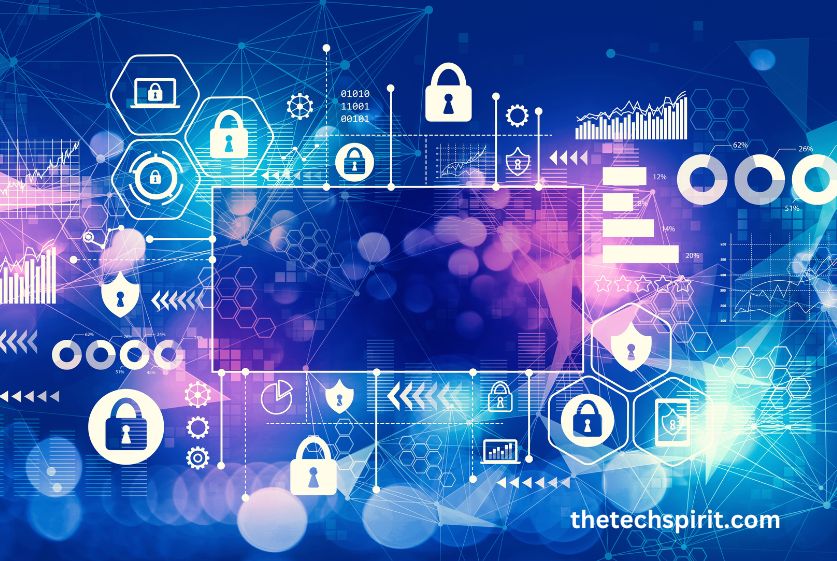Table of Contents
Cyber security refers to protecting internet-connected systems from digital attacks that seek to access, steal, damage, or disrupt information. As the world becomes more digitally connected every day, Cyber Security Infographics are crucial for protecting individuals, businesses, and governments from growing cyber threats.
This infographic illustrates key aspects of cyber security in 2024, including common cyber attacks, best practices everyone should implement for protection, building a culture of cyber awareness within organizations, and emerging technologies that will shape the future landscape of this critical field.
Common Cyber Threats and Attacks
Cybercriminals use a variety of methods to breach defenses and compromise networks and systems. Being aware of these common threats is the first step toward protecting yourself and your organization.

Malware
Malware refers to malicious software like viruses, ransomware, spyware, and worms that gain access to systems often through links, attachments, or unsecured websites. Once inside, malware can do an array of damage from stealing data to encrypting files for ransom.
Phishing
Phishing involves cyber criminals creating legitimate-looking emails and websites to access sensitive data like login credentials or credit card details by tricking recipients and users. Phishing relies on social engineering to exploit human error.
Social Engineering
Social engineering is a broad term encompassing the psychological tricks hackers use to manipulate employees into handing over sensitive company or customer data, paying bogus invoices, or even unwittingly installing malware.
Denial of Service
A denial of service (DoS) attack overloads websites and networks with traffic to make services unavailable to users. The distributed denial of service (DDoS) variant leverages thousands of devices to amplify these disruptive efforts.
Cyber Security Best Practices
While threats are inevitable, putting proactive processes and preventative tools in place significantly improves cyber resilience. Here are key best practices individuals and businesses should implement:
Strong Passwords
Simple or reused passwords leave you vulnerable. Using long, complex, and unique passphrases for all accounts and networks thwarts brute-force attempts. Enable multi-factor authentication when available.

Multi-Factor Authentication
MFA requires users to provide multiple proofs of identity (like codes sent to devices) when logging in rather than just inputting a password, adding an extra layer of security.
Software Updates
Patches fix identified vulnerabilities in operating systems, browsers, apps, and other software. Letting updates install promptly ensures holes can not be exploited by criminals.
Backup Your Data
Maintaining recent copies of critical data gives you the ability to restore original files if they get lost, stolen, or encrypted. This can minimize downtime from attacks like ransomware.
Creating a Cyber Security Culture
Organizations also need to implement internal cyber security awareness programs and best practices to deal with the external threats landscape.
Employee Training
Conduct regular cyber security training workshops with staff to teach them how to identify risks, avoid behavior that may unintentionally introduce threats, and instill resilience against attacks.

Security Policies
Craft clear formal policies that cover acceptable use of devices, authentication protocols, accessing company data and networks, reporting incidents, and more. Review policies annually and ensure understanding.
Incident Response Planning
Develop, document, and practice strategies across departments for detecting, investigating, and responding swiftly to cyber incidents to minimize business disruption. Report criminal acts to authorities.
The Future of Cyber Security Infographic
As emerging technologies expand possibilities and risks, the future of cyber security lies in using breakthrough innovations to enhance threat prevention, detection, and mitigation.
AI and Machine Learning
Sophisticated AI algorithms will allow the software to detect network anomalies, uncommon user behavior, suspicious files, zero-day threats, and more while adapting in real-time.
Cloud Computing Security
Securing cloud infrastructure is a top priority to ensure scalability alongside safety as more data and services migrate to hosted cloud environments with inherent vulnerabilities.

Blockchain Technology
Blockchain shows promise for cyber security thanks to its decentralized nature, advanced encryption, and ability to create immutable audit logs that track access and changes across networks.
Conclusion
Cyber threats unfortunately won’t dissipate anytime soon. But individuals and organizations alike can deter the vast majority of incidents through cyber security awareness education, implementation of preventative solutions, and ongoing policy and technology refinements.
Paying attention to fundamentals yields major protection dividends while allowing you to evolve defenses as the future unfolds.
FAQs
What are the most common cyber threats today?
The most prevalent cyber threats currently include phishing, ransomware, social engineering attacks, distributed denial of service (DDoS) efforts, and malware infections.
What’s one simple step anyone can take to boost cyber security?
Enabling multi-factor authentication on important accounts provides significant protection against password insecurity and even phishing by requiring an additional login verification method.
How can organizations build a culture focused on cyber security?
Options like cyber security training workshops, clear security policies, testing systems, and incident response planning help instill a dynamic culture focused on protecting company-wide information and data assets.
Why is patching and updating software crucial for security?
Software companies constantly release patches that address vulnerabilities identified in their products. Keeping your apps and systems fully updated closes security gaps before criminals can infiltrate networks through them.
What emerging technologies seem promising for improving future cyber security?
Artificial intelligence, machine learning, blockchain architectures, and advancing cloud computing security capabilities all show enormous potential for bolstering defenses against increasingly sophisticated digital threats.









